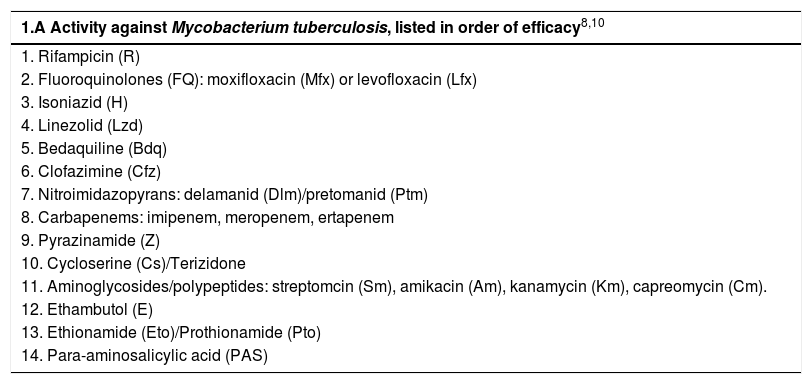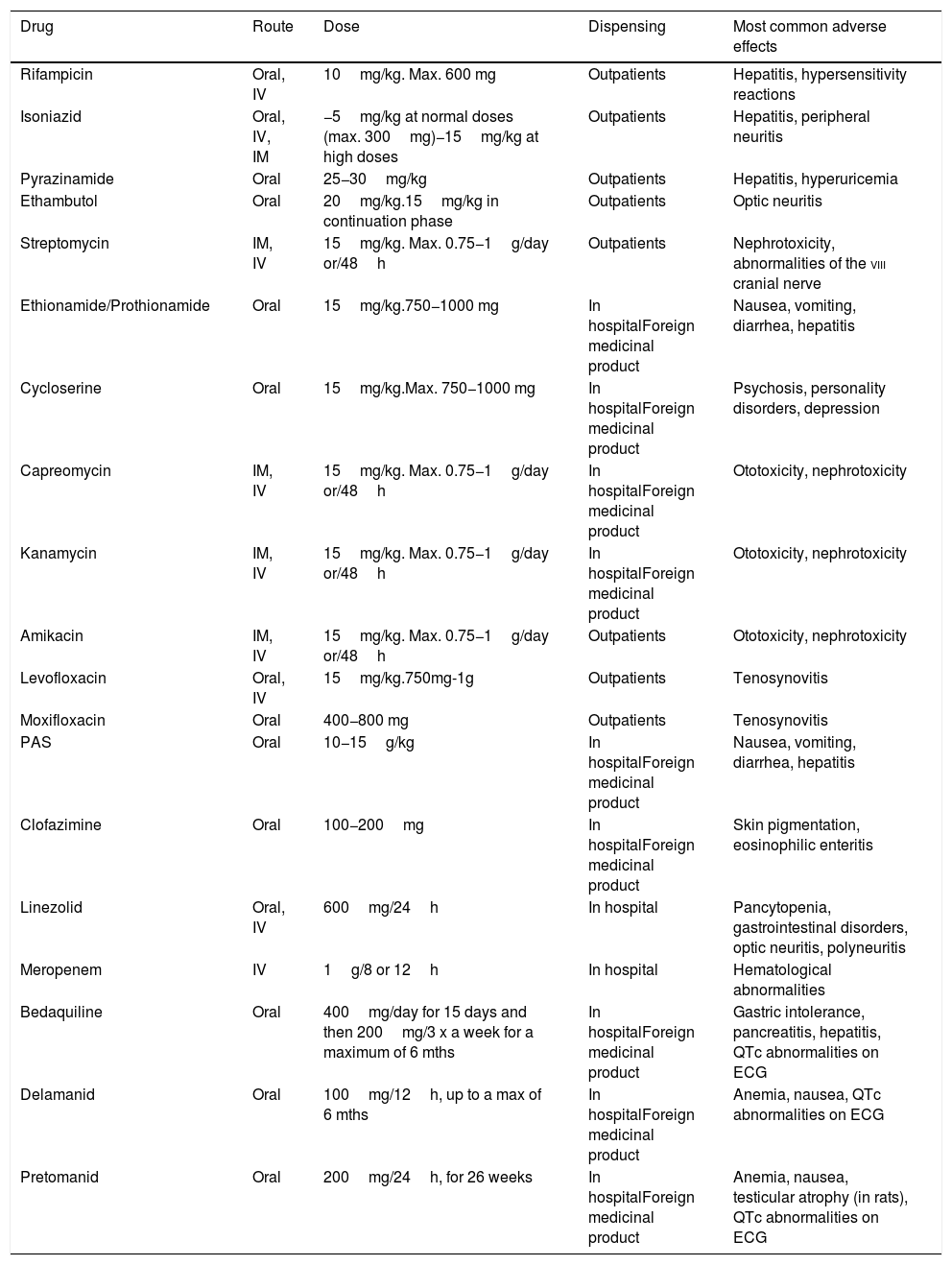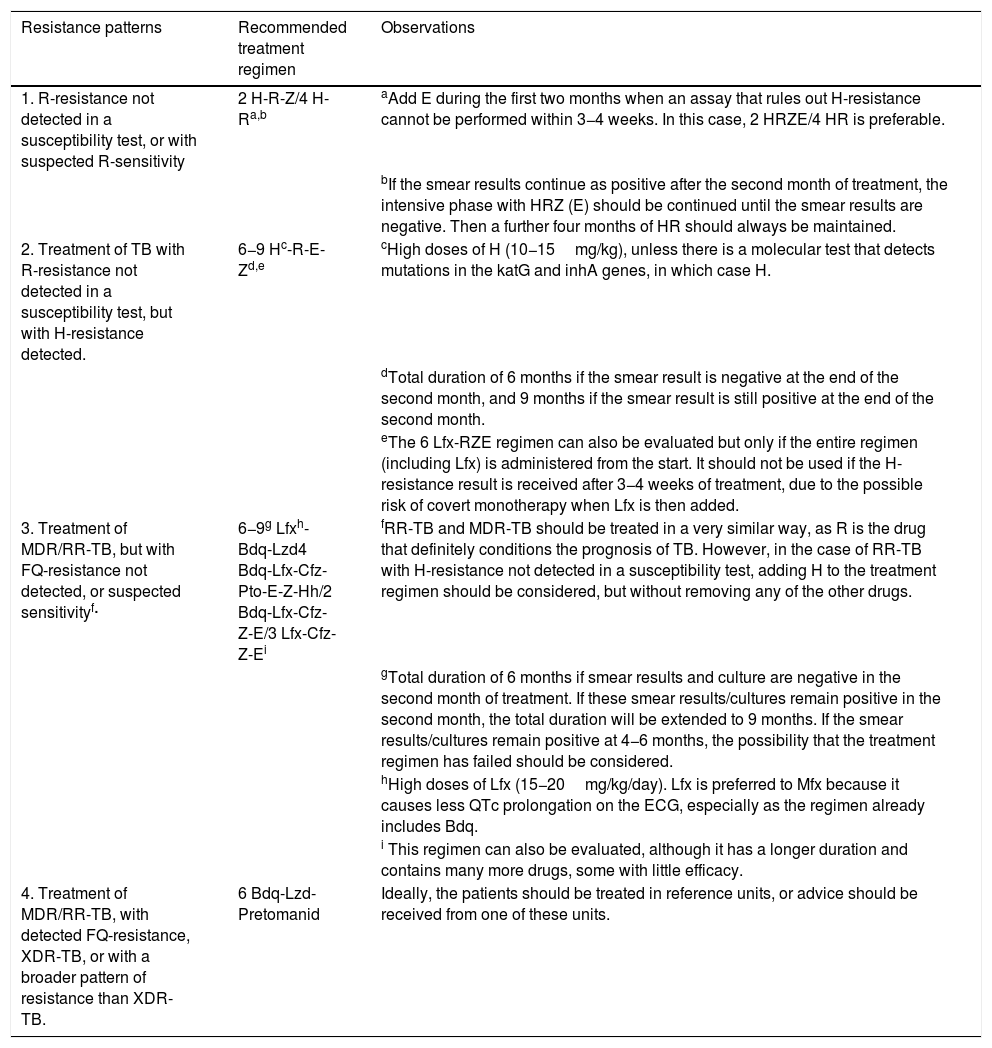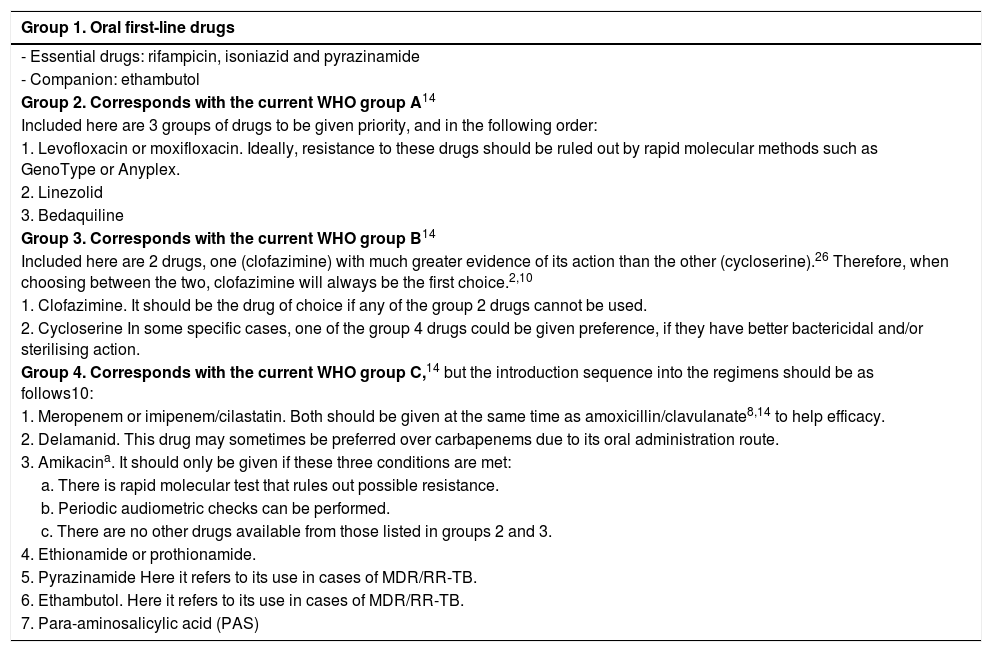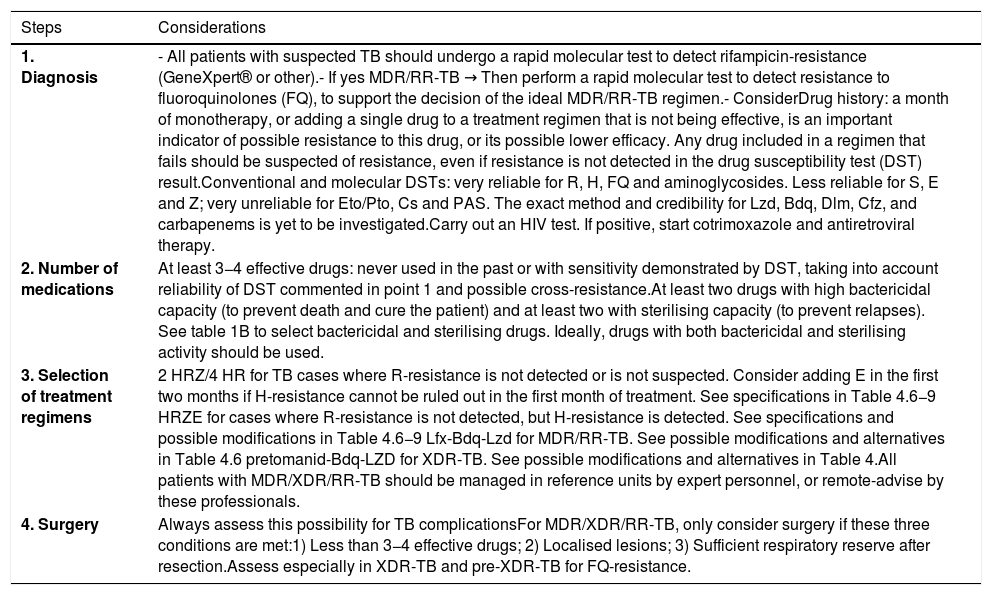Drug-resistant tuberculosis, especially that with resistance to rifampicin (RR-TB), has become one of the main obstacles to achieving the dream of eradicating tuberculosis. Furthermore, it is necessary to combine 3 or 4 different drugs in the attempt to cure TB, however, unfortunately, there are few available that can be considered genuinely effective. Fortunately, the notable worldwide increase in RR-TB in recent years has led to the investment of resources in the development of new drugs for TB, and other drugs investigated for other diseases have been successfully tested on TB. This has resulted in a clear change in the clinical management of these patients over the last 3−4 years, and it is now easier to design therapeutic regimens and achieve higher success rates. All these changes are updated in this review.
La tuberculosis con resistencia a fármacos, sobre todo la que conlleva resistencia a rifampicina (TB-RR), se ha convertido en uno de los principales obstáculos para alcanzar el sueño de erradicar esta enfermedad. Y es que, para intentar curar la TB es necesario asociar 3 o 4 fármacos diferentes y, lamentablemente, son pocos los disponibles que se puedan considerar auténticamente eficaces. Pero, afortunadamente, el notable incremento que ha habido en los últimos años de la TB-RR en el mundo, ha motivado que se hayan invertido recursos en el desarrollo de nuevos fármacos para la TB, o que otros antimicrobianos investigados para otras enfermedades se hayan probado con éxito en la TB. Esto ha hecho que el manejo clínico de estos pacientes haya cambiado notablemente en los últimos 3−4 años, y resulte ahora más sencillo diseñar esquemas terapéuticos y conseguir mayores tasas de éxito. Todos estos cambios se actualizan en esta revisión.
Artículo
Comprando el artículo el PDF del mismo podrá ser descargado
Precio 19,34 €
Comprar ahora






